
People are used to associating the word "parasites" with common worms in the human colon. But its location can be so varied that the patient has not been aware of the presence of subcutaneous parasites for several years. Yes, unwanted guests can sit comfortably under a person's skin, and their size can rarely be called microscopic.
Types of parasites and their symptoms
Is your body itching? Purulent acne on the face? Occasional cloudiness in the eyes? All of these are subcutaneous parasites that move quickly in the body and can affect internal organs. This movement occurs independently or with blood flow. The patient may not know about such a "phenomenon" for many years, until some worm is under the layer of epidermis and "greets".

To further scare the reader, it is necessary to provide characteristics of possible varieties of parasites, whose habitat is located just under the skin.
Filariasis
If you go to tropical countries, be prepared to fight insects, which through their bite can not only cause problems in the form of itching or pain, but can also infect you with parasites of the nematode species - filariasis. The danger of the disease lies in the long incubation period - about 5-7 years. All this time, the parasites will multiply in the human body without giving in to any signs.
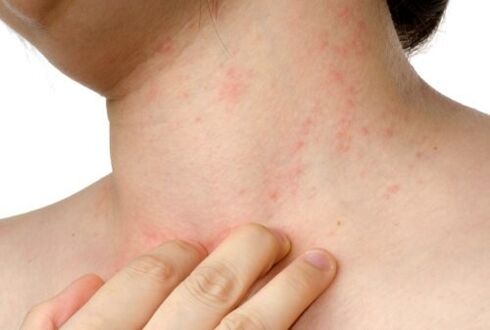
With a large amount of waste released into the body, intoxication gradually begins to develop in the person, which first manifests itself as a characteristic urticaria on the skin. She is itchy only in the early stage. In the future, the patient will feel around for various movable seals, face loss of vision, and experience acute fever.
As for the diagnosis, here the patient is examined by a specialist when contacting the clinic. With the naked eye you can see worms crawling under the skin, they are also perfectly visible when examining the eyes. By clarifying the course of the disease and the events that precede it, the specialist diagnoses and prescribes the appropriate treatment.

Important!When traveling to hot countries, do not neglect vaccination, even if it is not required by visa control or health services.
Dracunculiasis
Helminths in the group shown enter the body through contaminated water ingested. It contains larvae, detection of which is, in principle, impossible. But the infection itself can be fatal for a person, as the larvae grow up to three feet in size. One of these helminths can settle in the stomach or enter the lungs, completely blocking a person's breathing. But this rarely happens, as in most cases this type of parasite will pick out a person's lower limbs.

Symptoms include:
- itchiness in the lower extremities;
- the formation of a characteristic roll on the legs or feet;
- various purulent skin lesions;
- peculiar bubbles, reaching at least 8 cm in diameter, which simply burst under the influence of water.

Pay close attention to the type of water you drink, as it is easier to protect yourself and your loved ones from this infection than it is to resort to treatment.
Scabies
All unpleasant scabies are manifested only by itching, rarely on the skin you can find any change in the form of spots and redness. This is due to skin mites, whose infection only occurs when interacting with another carrier of the disease or in contact with their clothing.
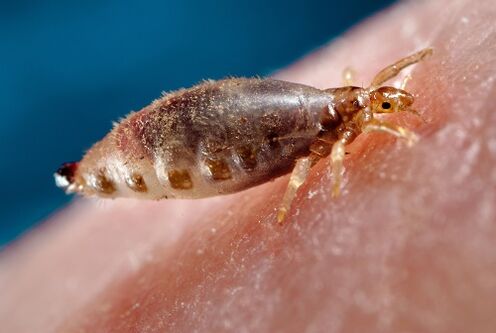
Ticks are small in size, not visible to the naked eye, but their activity on the body is quite extensive. In the case of skin penetration, the parasites gnaw their passages in the deep layers of the epidermis - this causes itching. With long parasite walks, passages begin to appear on the skin, and if surfaces are treated with iodine, a spider web characteristic of such passages can be noted.
Related signs include:
- blisters form at scratch sites;
- hands and joint surfaces are most affected.

Important!Despite rapid diagnosis through specialist examination, treatment may take time, so it is best to listen for precautions against infection.
demodecosis
Of the numerous varieties of parasites, it is worth mentioning separately the lesions caused by ticks of the genus Demodex. Its distribution is mainly located in the face's sebaceous glands, which present themselves in the form of a characteristic acne. Outwardly, this reproduction looks very unattractive. Loss of eyelashes is also called lesions and symptoms.
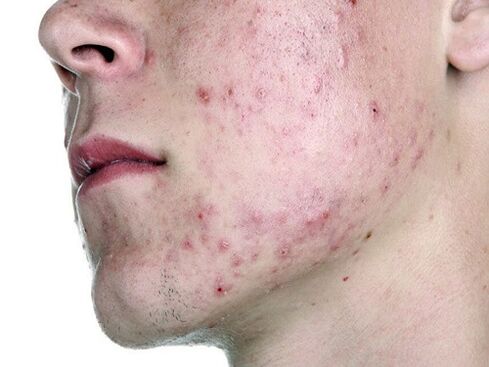
Diagnosis of such an injury takes just a few minutes. The doctor simply examines the skin. But the treatment can take several years, even if all the specialist's prescriptions are strictly followed.
Diagnosis of subcutaneous pests
In most cases, the diagnosis of the affected skin is made directly in a specialist's office, who, upon visual examination, can already determine the disease. But to accurately identify the cause and the concomitant damage to internal organs, the patient must undergo a comprehensive medical examination. Firstly, it is necessary to clarify all lesions and, secondly, in this way it is possible to find foci of accumulation of parasites (if any) and to determine approximately their number.

If you encounter unpleasant symptoms in the form of rash, itching and other changes, contact specialists such as:
- dermatologist;
- allergist;
- neuropathologist;
- medical psychologist;
- specialist in infectious diseases.
A comprehensive exam includes a visit to a neurologist and medical psychologist, as itching and rash are often a simple psychological disorder. But these visits are only due to the lack of an accurate diagnosis, which was not made after examination by the local doctor.
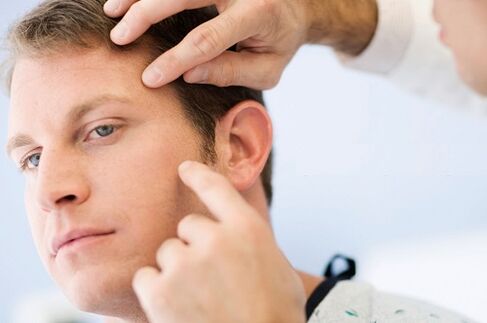
In identifying the type of disease, the laboratory diagnosis of the patient is especially important, which will accurately show the presence of parasites under the skin or in internal organs. This survey includes two steps:
- Direct diagnosis of parasites - a scrape or smear of the mucous membranes is used to study the changes. The direct method is used in case of clear manifestation of the presence of parasites: skin redness, blisters, purulent acne.
- The second step involves studying the blood for the presence of antigen-antibody complexes, which accurately determine the immune response to combat parasites in the human body. As a rule, the discarded elements of the parasites' vital activity almost completely kill the protective antibodies, as a result of which the body's weakened immunity is unable to overcome the invasion and activity of unwanted guests.

To prescribe the treatment, it is necessary to accurately identify the type of parasite that has penetrated the human body. Here, along with a skin scraping or a mucus membrane stain, hair, blood, nails, feces, the contents of skin blisters and other important biological materials are often taken for analysis.
Treatment
It is impossible to say exactly about the treatment of parasites under the skin. Here, its location, area and stage of the lesion play an important role.
Only the following techniques can be cited as general information:
- Subcutaneous mites must be removed with medications based on eliminating all types of parasites from the body. Here, experts often prescribe acaricidal agents as well as antihistamines. As an external application, antibiotic ointments and gels, as well as vasoconstrictor drugs, eg an aqueous solution of adrenaline-resorcinol, act as an effective remedy. Instructions for use and treatment regimen will be explained by the physician depending on the stage of the injury.
- The dracunculiasis is subject to surgical intervention. Including all kinds of worms that have spread under a person's skin or that have already reached internal organs. The danger of such injuries lies in the spread of parasites to the internal organs, which often causes suffering in the brain. This is why the patient needs to undergo a complete and comprehensive examination to discover the location of the worms.

The general principle of removing parasites from the body takes place in two ways - a conservative method and surgical intervention. The use of alternative methods is not recommended in the case of the treatment of subcutaneous parasites, as it is time-consuming and damage to the organism can already be severe and have consequences for the patient's future life.
Prophylaxis
Infection by parasites occurs through direct contact with a sick person or infected area, in case of ingestion of poor quality food or water. Leading positions among the causes of parasite infestation are given to violations of hygiene rules.
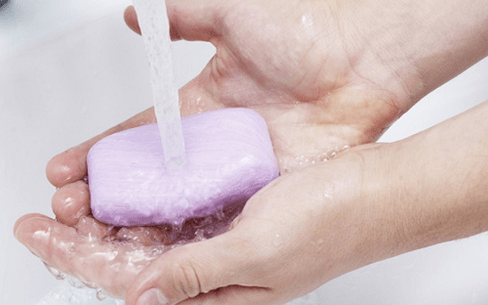
To protect yourself from the problems presented, you must:
- Wash your hands before eating, whenever you come into contact with objects located in public places, as well as after using money.
- Do not try someone else's stuff, as they may be infected with parasites, whose larvae are located on the skin and therefore are easily transmitted.
- Do not use other people's cosmetics. Lipsticks, masks, someone else's soap, and other items can become the same parasite larvae carriers.
- When eating fruits and vegetables, be sure to expose them to washing and other cleaning procedures for dirt and dust - these can also include pest larvae.
- In case of injury or abrasion, it is necessary to treat them immediately to avoid infections.

Take care of your health and get the mandatory vaccinations in case of a trip to tropical countries. There, do not refuse help and treatment of wounds, bites and other mechanical skin injuries. This way, you can protect yourself from the visit of unwanted visitors.



























